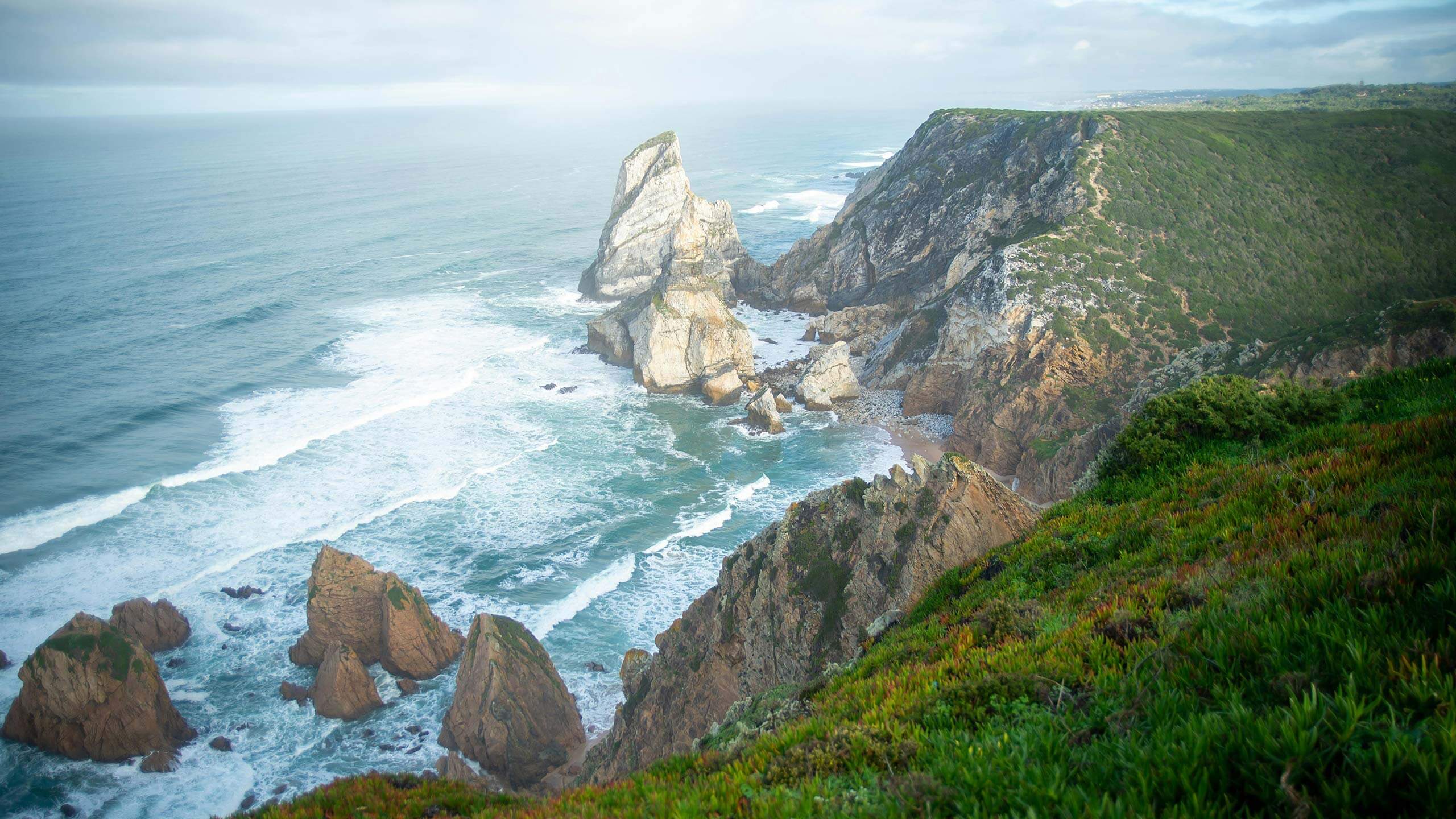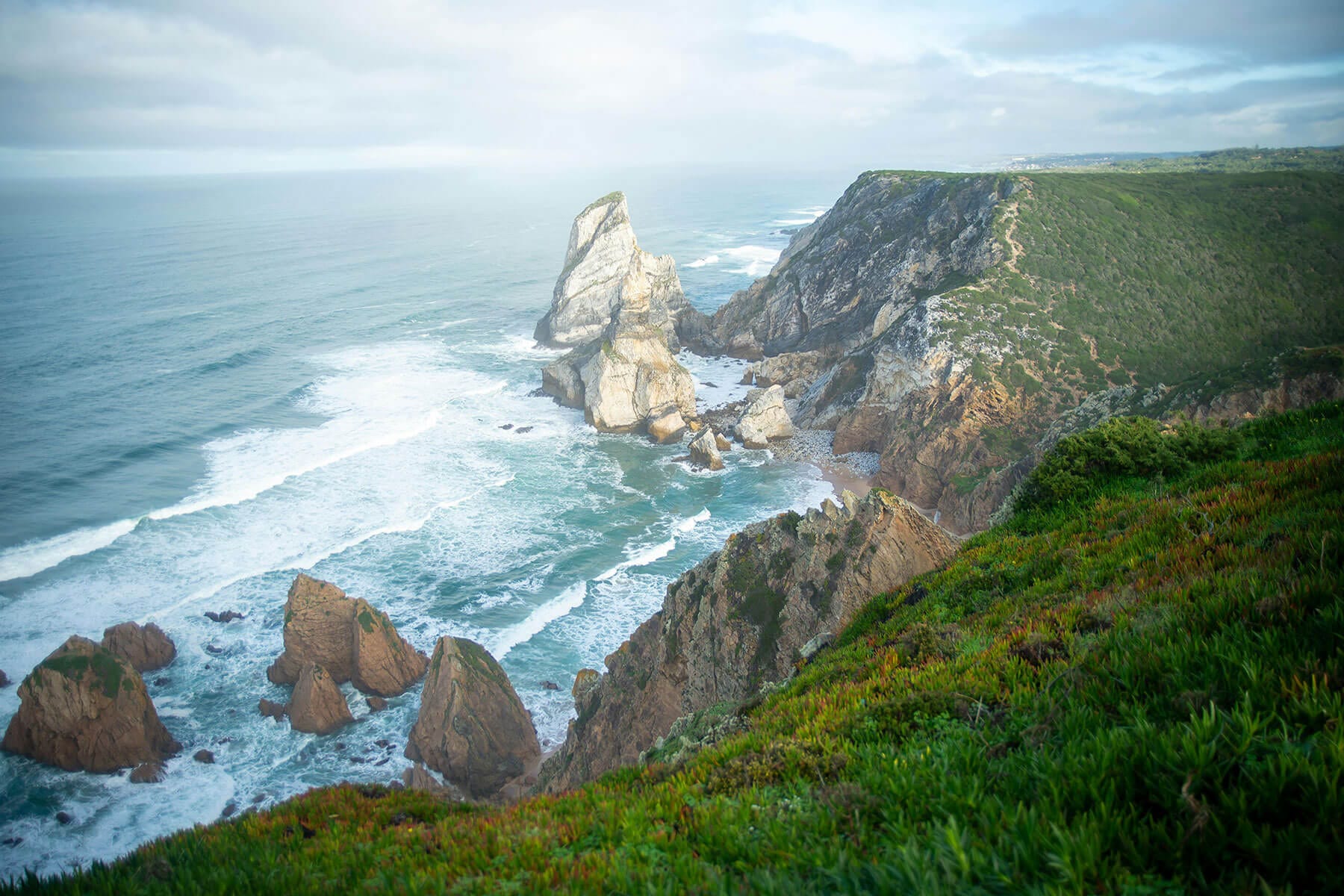Reforestation in
Portugal
Portugal, which encompasses mainland and island territories, was once heavily forested. Today, only ¼ of its historic forest cover remains. The country’s mainland presence stretches to the westernmost point of Europe at the Iberian Peninsula; and off the coast, includes the volcanic Atlantic archipelagos of Madeira and the Azores. While some native species, such as the cork tree, persist, most of the country’s modern plant life is non-native species that were introduced by humans.
Over the last decade, Portuguese forests have experienced significant changes due to agricultural abandonment, land use shifts to forestry, and large-scale forest fires. Climate change poses an additional threat, as shifting temperature and precipitation patterns provide suboptimal conditions for many native forest species. With agricultural land accounting for 37.7% of the country’s land area, restoring native habitat is crucial for ensuring the continued survival of endangered wildlife.

Portugal Stats
36%
FOREST COVER
36% of Portugal’s land area is covered in forest.
Oak-associated biodiversity in the UK (OakEcol)
UK CEH Environmental Information Data Centre
53%
Tree cover loss
From 2001-2023, Portugal lost 1.21 million hectares of tree cover, representing a 53% decrease since 2000.
Portugal Deforestation Statistics, Global Forest Watch
46%
Forested
46% of Portugal’s land area is forested ecosystems.
1. Oak-associated biodiversity in the UK (OakEcol)
UK CEH Environmental Information Data Centre
22.4%
protected
22.4% of Portugal's terrestrial area is protected, below the EU average of 26.4%.
Portugal - Country Profile, Biodiversity Information System for Europe
93k
Hectares burned
Portugal, the most wildfire-affected European country, saw over 93,731 hectares burned annually between 2009-2023.
Area burned by wildfires in Portugal from 2009 to 2023, Statista
75%
Habitat Loss
Portugal, the most wildfire-affected European country, saw over 80,000 hectares burned annually between 2009-2021.
60%
Of Water
60% of potable water in California is sourced from forested watersheds.
Project Highlights
Portugal's native woodlands have suffered from profound deforestation and desertification, but we can still restore these vital forests. Reforestation in Portugal can rehabilitate degraded land, replenish water tables with native species, and engage local communities in environmental restoration. Discover two recent projects that have successfully planted trees in Portugal!

Free Trees for Portugal
This project worked to reduce desertification, restore deforested areas, revitalize native ecosystems and empower local communities to restore their environment, as well as providing promotional support and visibility to continue the work of ecological restoration in Portugal. By partnering with local foresters and ecologists, it focused on holistic native reforestation that addresses environmental, social, and financial realities. Its long-term approach involves planting and replanting native trees, and working with local nurseries and organizations.
Renature Leiria
This project addresses forest restoration in an area prone to wildfires and low soil fertility, exacerbated by climate change. It focuses on large-scale interventions to restore soil fertility and enhance the local water cycle by planting fire-resistant, endemic species. These actions aim to boost ecological resilience, support biodiversity, and adapt to climate change, preventing desertification. Key species that were planted include maritime pine, cork oak, and strawberry tree.


Renature Estrela
This project planted trees to restore common land areas, supporting biodiversity recovery and the return of local ecosystem services. By planting endemic species such as maritime and Scots pine, cork and holm oak, and chestnut and strawberry trees, it seeks to enhance ecosystem resilience, adapt to climate change, and combat desertification. Additionally, the project supports the rural economy, providing positive impacts for local communities.


